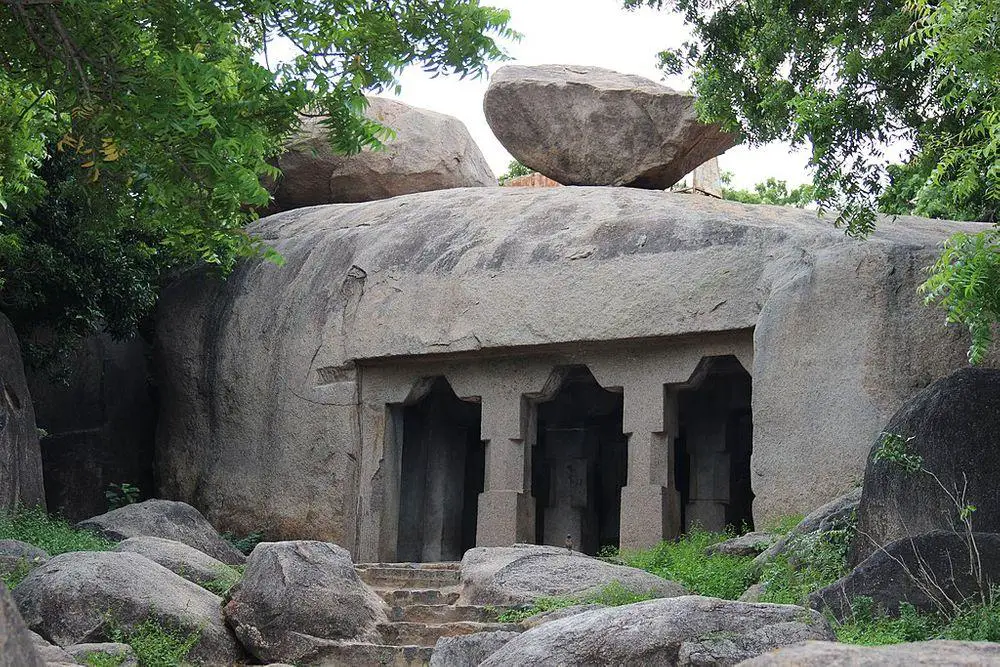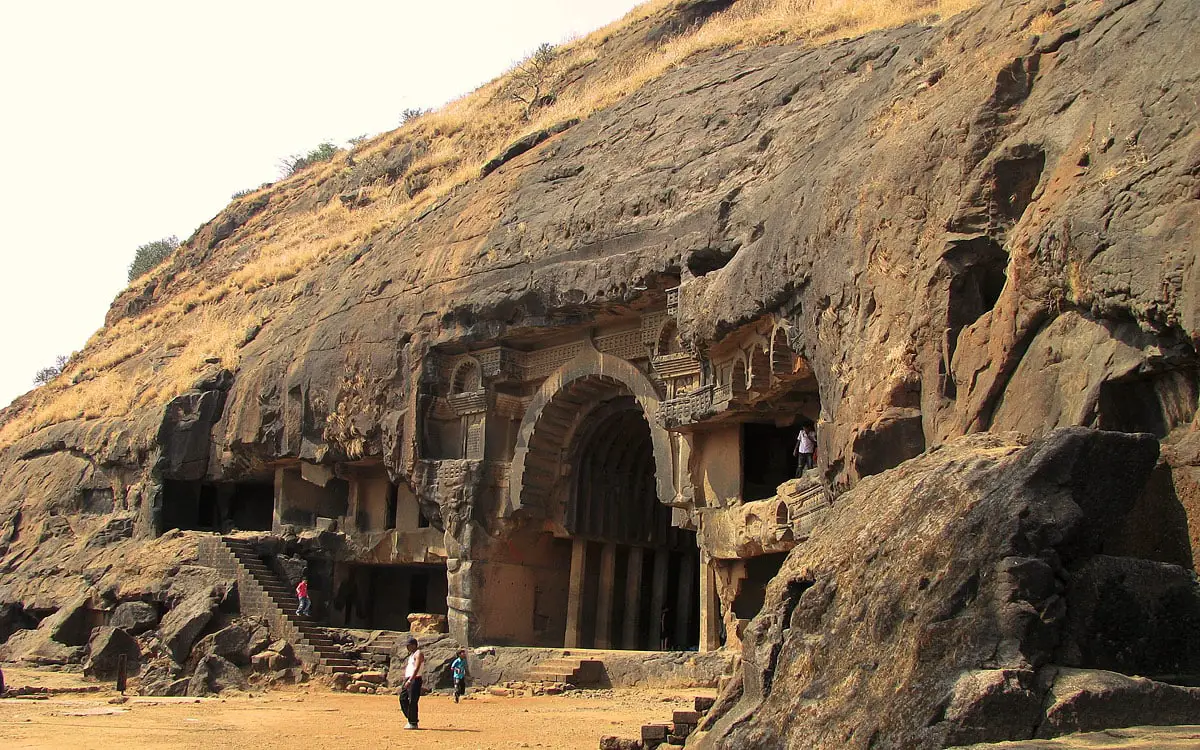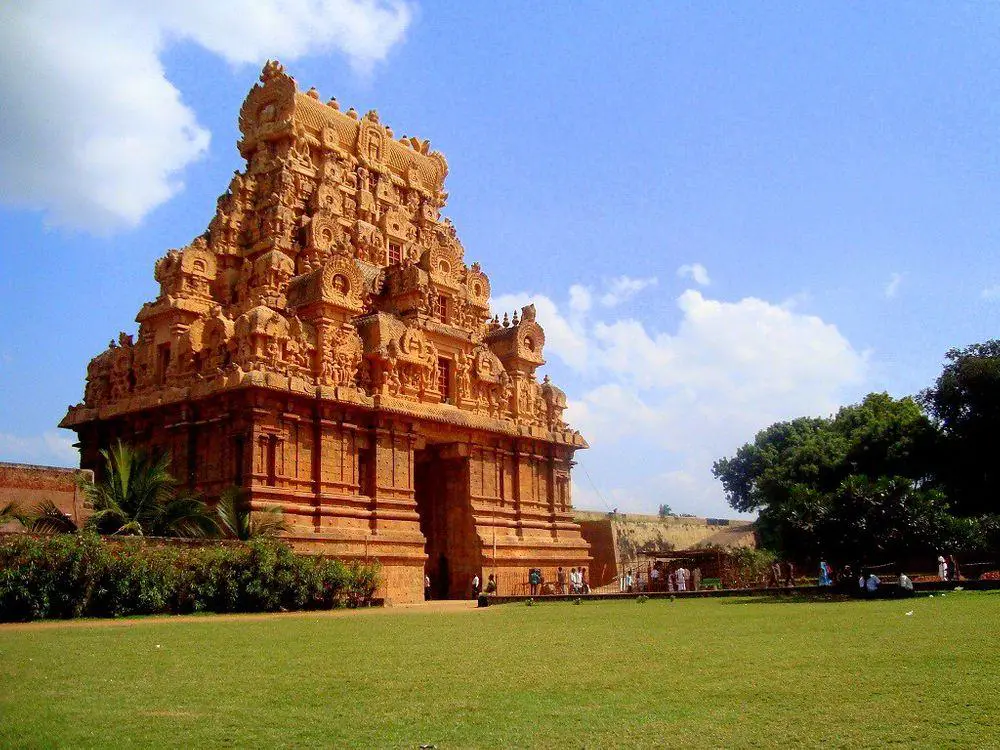World 🢖 Asia 🢖 India 🢖 Tamil Nadu
Hindu shrines 🢔 Religious architecture 🢔 Architectural wonders 🢔 Categories of wonders
Wonder
Dharmaraja Mandapa, Mahabalipuram

 In short
In short
The simple, even ascetic Dharmaraja Mandapa is somewhat less noticed rock-cut temple in Mahabalipuram.
 41.3%
41.3%
GPS coordinates
Location, address
Alternate names
Age
Religion
UNESCO World Heritage status
Map of the site
If you see this after your page is loaded completely, leafletJS files are missing.
 In detail
In detail
This temple is located near the Olakkannesvara Temple and an interesting, unfinished sculpted rock that resembles the famous Arjuna’s Penance further north.
Description
Dharmaraja Mandapa is facing east. Its architecture is simple but elegant. The front part has three openings with two pillars. Inside is a simple hall divided by two more pillars. At the back wall, three-four steps lead up to three cells – shrines. Most likely the central, larger cell was devoted to Shiva, two others – to Brahma and Vishnu.
The only ornamentation inside has been two dvarapalas (mythical guards), “guarding” the central shrine. Both reliefs have been chiseled off in later times, possibly, during the Vaishnava resurgence in the 14th – 15th centuries.
History
An interesting detail in this temple is an ancient inscription in Grantha writing and Sanskrit language, with fourteen lines. Most likely, it was made upon the completion of the temple. In other cases, these inscriptions help to understand the time of the construction, but not this time. The inscription is rather chaotic and lists several rulers of the Pallava dynasty without mentioning which one of these rulers ordered the temple.
The simple design of the temple is characteristic of comparatively early rock-cut temples. Some researchers consider that the temple was built during the time of Rajasimha I (reigned in 735 – 765 AD). Nevertheless, more researchers are inclined to think that it was built earlier, during the times of Paramesvaravarman I (reigned in 670 – 695 AD).
Vaishnavas occupied this temple during the 13th – 19th centuries.
References
- Saurabh Saxena, Mamallapuram – Dharmaraja Mandapa, July 16, 2016. Accessed on the 18th May 2019.
- K. R. Srinivasan, Cave Temples of the Pallavas, Archaeology Survey of India, 1964. Accessed on the 18th May 2019.
 Linked articles
Linked articles

Rock-cut architecture and sculptures
Rock-cut architecture is a very ancient form of architecture – the oldest structures are more than 5 thousand years old. The resistivity of the natural stone and the constant climate inside these structures has preserved many art values around the world.

Wonders of India
India is the seventh-largest country in the world by area, and, naturally, such a large area contains a huge amount of exciting attractions…
Wondermondo considers that India is the second richest center of architectural heritage in the world after Europe and maybe no single country in the world can match it in this respect.

Hindu shrines
Hinduism is one of the oldest religions – possibly the oldest one among contemporary religions and Hindu temples belong to the most impressive religious buildings in the world.
 Recommended books
Recommended books
Tamil Nadu: The Heart of Dravidian India
The huge temples of Tamil Nadu are justifiably famous. Through history and forty-four original photographs, this book explains how the temples came to be and what their statuary symbolizes. The book also paints a picture of what life was like in the civilizations that built them.
Mahabalipuram (Monumental Legacy)
Constructed in 700 CE by the famous Pallava king Rajasimha, Mahabalipuram is a unique monument where art form combines with religion and legends. Also known as Mamallapuram, it showcases the best of Tamil art and architecture. The beauty of the monument is further enhanced by its location on the shores of the Bay of Bengal, the latter significantly influencing the creations. Part of the prestigious Monumental Legacy series, this book presents a graphic account of the site and its monuments-mandapas (cave temples), rathas (chariots), open-air bas-reliefs, and structural temples.


